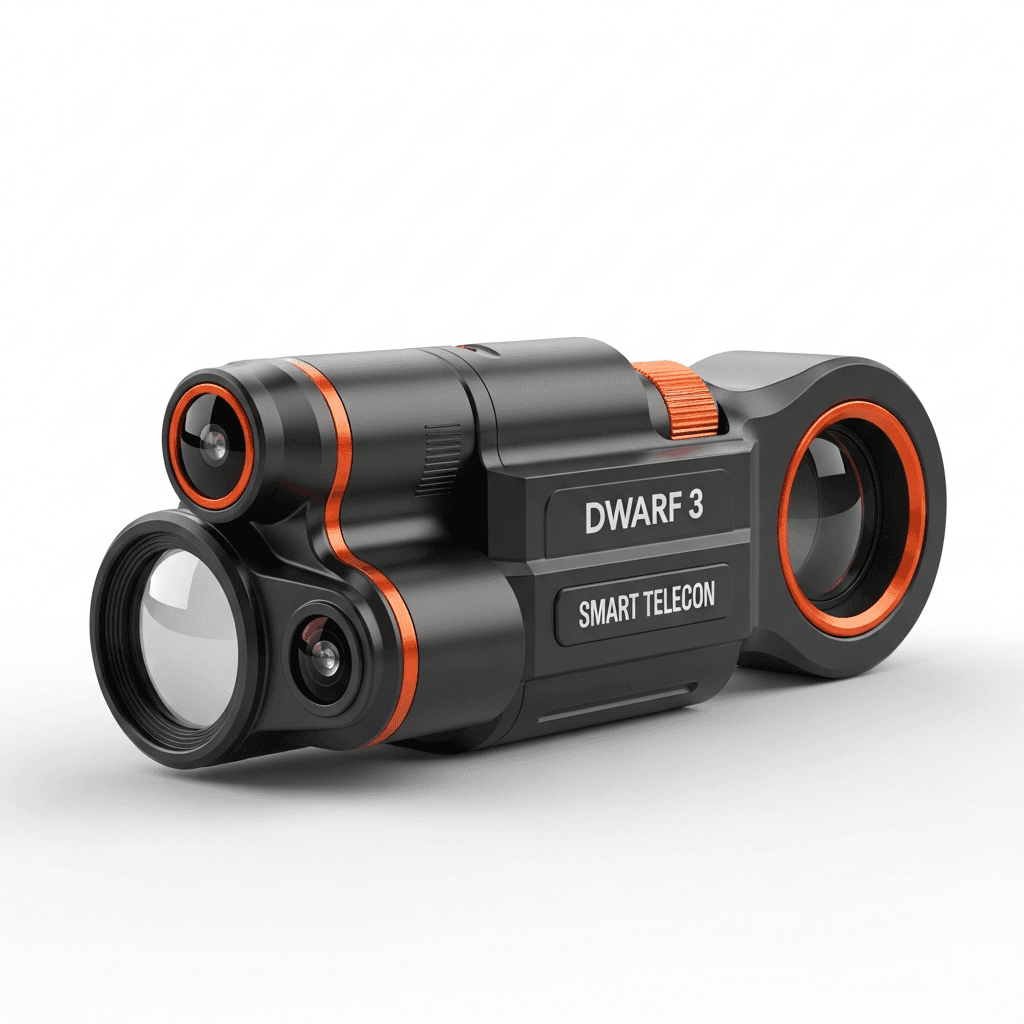Comet Astrophotography Equipment
Capture stunning images of comets with the right equipment. From simple camera setups to advanced imaging systems.
Getting Started with Comet Photography
Comet astrophotography can be as simple or complex as you want:
- Beginner: DSLR/mirrorless camera + tripod + wide lens
- Intermediate: Add a star tracker for longer exposures
- Advanced: Telescope + dedicated astro camera + mount
Essential Equipment
Camera
Any DSLR or mirrorless camera with manual controls will work. Full-frame sensors gather more light but aren't essential.
Lens
Wide-angle to medium telephoto lenses (24-200mm) work best. Fast lenses (f/2.8 or faster) allow shorter exposures.
Mount
A star tracker allows exposures longer than 30 seconds without trailing, crucial for faint comets.

Dwarf 3 Smart Telescope
Around $550
✓ Pros
- • Ultra-portable all-in-one imaging system
- • Automatic GoTo tracking and live stacking
- • Excellent for galaxies, nebulae, and deep-sky
- • Long battery life (4+ hours)
- • Built-in dual-band and astro filters
- • Beginner-friendly smartphone app control
✗ Cons
- • No tripod included
- • Not ideal for planetary imaging
- • WiFi range limitation (10-15 feet)
- • 60-second maximum exposure limit
Specifications
- • 35mm
- • 150mm (737mm equiv.)
- • Sony IMX678, 8.3MP
- • 10,000mAh built-in
Check Current Price →
Purchases via this link may earn us a commission at no extra cost to you.
Photography Tips
- Use RAW format for maximum editing flexibility
- Take multiple exposures and stack them
- Focus carefully using live view and magnification
- Shoot from a dark location away from light pollution
- Check our news section for current comet brightness
Find Comets to Photograph
Use our tools to find the best targets: